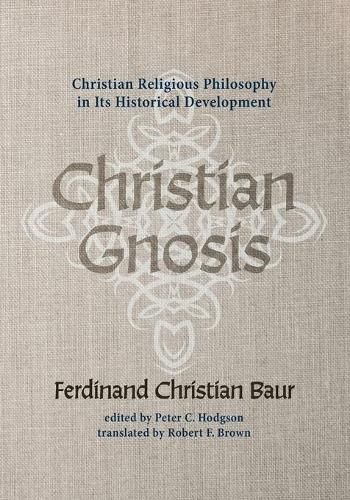Readings Newsletter
Become a Readings Member to make your shopping experience even easier.
Sign in or sign up for free!
You’re not far away from qualifying for FREE standard shipping within Australia
You’ve qualified for FREE standard shipping within Australia
The cart is loading…






This title is printed to order. This book may have been self-published. If so, we cannot guarantee the quality of the content. In the main most books will have gone through the editing process however some may not. We therefore suggest that you be aware of this before ordering this book. If in doubt check either the author or publisher’s details as we are unable to accept any returns unless they are faulty. Please contact us if you have any questions.
Baur published Die christliche Gnosis in 1835. It was his first great religio-historical study and the most important book on Gnosticism published in the nineteenth century. It is now recognized as having a pivotal status in Baur studies. In it Baur offers a unique thesis about a link between ancient and modern religious philosophy. Gnosis is a type of religious philosophy that contains ideas about the relationship between God, world, and human beings, as expressed in concrete religious traditions and practices. As such, it makes an important contribution to Christian theology. In the first part, Baur develops a concept of gnosis in dialogue with his predecessors and contemporaries. He classifies the gnostic systems in terms of how they conceive the relationship of Christianity to Judaism and paganism, and then describes them in detail (Valentinus, Ophites, Bardesanes, Saturninus, Basilides, Marcion, Pseudo-Clementines). Following transitional sections on the criticism of and reaction to gnosis in church history, the book ends with modern religious philosophy (Boehme, Schelling, Schleiermacher, and Hegel–Baur’s first discussion of these major thinkers). This book was written over a hundred years before the manuscript discovery at Nag Hammadi, which awakened a lively interest in Gnosticism that continues to the present day.
$9.00 standard shipping within Australia
FREE standard shipping within Australia for orders over $100.00
Express & International shipping calculated at checkout
This title is printed to order. This book may have been self-published. If so, we cannot guarantee the quality of the content. In the main most books will have gone through the editing process however some may not. We therefore suggest that you be aware of this before ordering this book. If in doubt check either the author or publisher’s details as we are unable to accept any returns unless they are faulty. Please contact us if you have any questions.
Baur published Die christliche Gnosis in 1835. It was his first great religio-historical study and the most important book on Gnosticism published in the nineteenth century. It is now recognized as having a pivotal status in Baur studies. In it Baur offers a unique thesis about a link between ancient and modern religious philosophy. Gnosis is a type of religious philosophy that contains ideas about the relationship between God, world, and human beings, as expressed in concrete religious traditions and practices. As such, it makes an important contribution to Christian theology. In the first part, Baur develops a concept of gnosis in dialogue with his predecessors and contemporaries. He classifies the gnostic systems in terms of how they conceive the relationship of Christianity to Judaism and paganism, and then describes them in detail (Valentinus, Ophites, Bardesanes, Saturninus, Basilides, Marcion, Pseudo-Clementines). Following transitional sections on the criticism of and reaction to gnosis in church history, the book ends with modern religious philosophy (Boehme, Schelling, Schleiermacher, and Hegel–Baur’s first discussion of these major thinkers). This book was written over a hundred years before the manuscript discovery at Nag Hammadi, which awakened a lively interest in Gnosticism that continues to the present day.